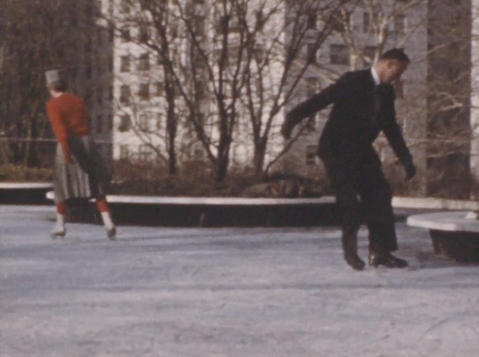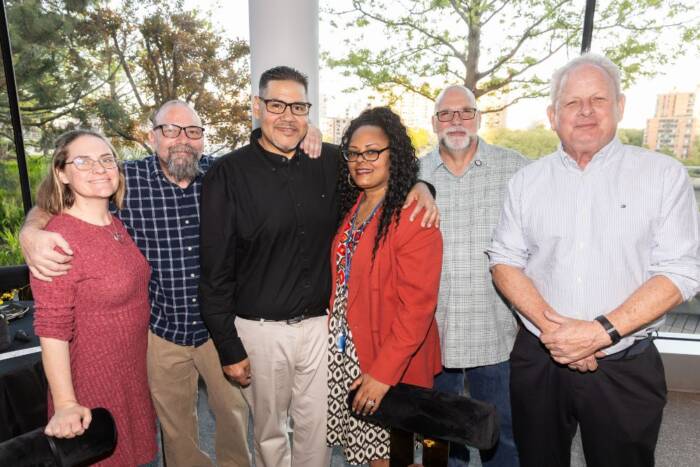Campus tennis court transforms into a new multisport athletic hub
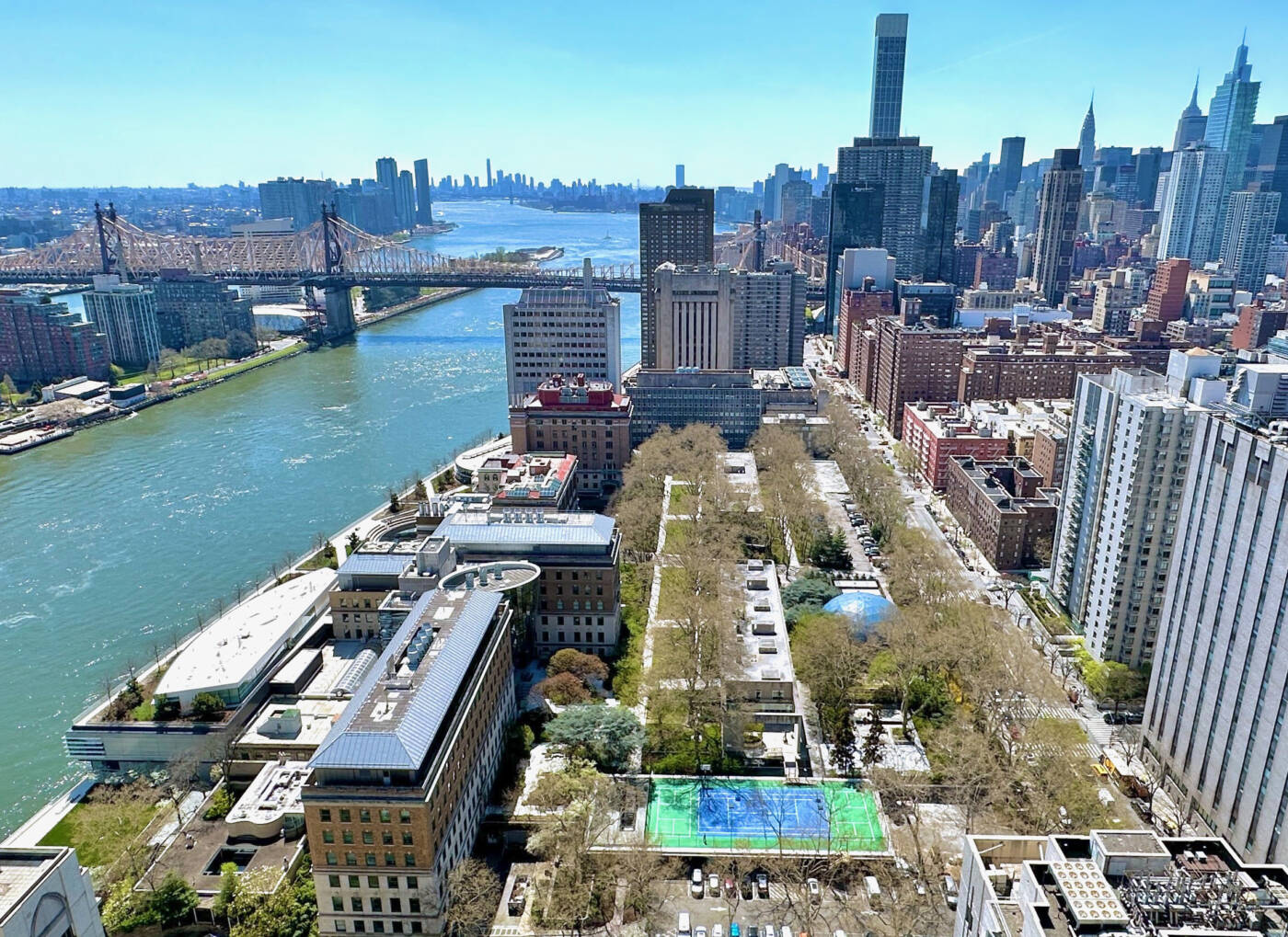
Even in an aerial view of The Rockefeller University campus, the brightly colored court is easy to spot. (Alexander Kogan)
As spring blooms across campus, the Rockefeller community can enjoy the warmer weather not only by watching gardens come to life and dining al fresco by the river. This season also marks the return of a very popular outdoor venue.
The university’s tennis court has been newly transformed into a multisport athletic hub with basketball, pickleball, badminton, and futsal (aka soccer) added to the mix. Thanks to a fully refurbished surface and other upgrades, the courts stand ready to again welcome all players, resuming its role as a key community space that’s always changed with the times—and that carries a legacy as old as the institution itself.
A sporting history
The idea that working out is good for both the body and the mind wasn’t lost on John D. Rockefeller, who was almost obsessively devoted to routines of mindful eating and vigorous exercise. Today, that idea translates into features such as free on-site exercise classes and physical therapy sessions, along with the commitment to high-quality exercise amenities. But the university drew on that ethos from the get-go, offering incentives for healthy habits to its earliest employees.
The 1916 photo(opens in new window) below shows where it all started—with one fenced-in tennis court just south of the hospital building, within the purple rectangle at right.
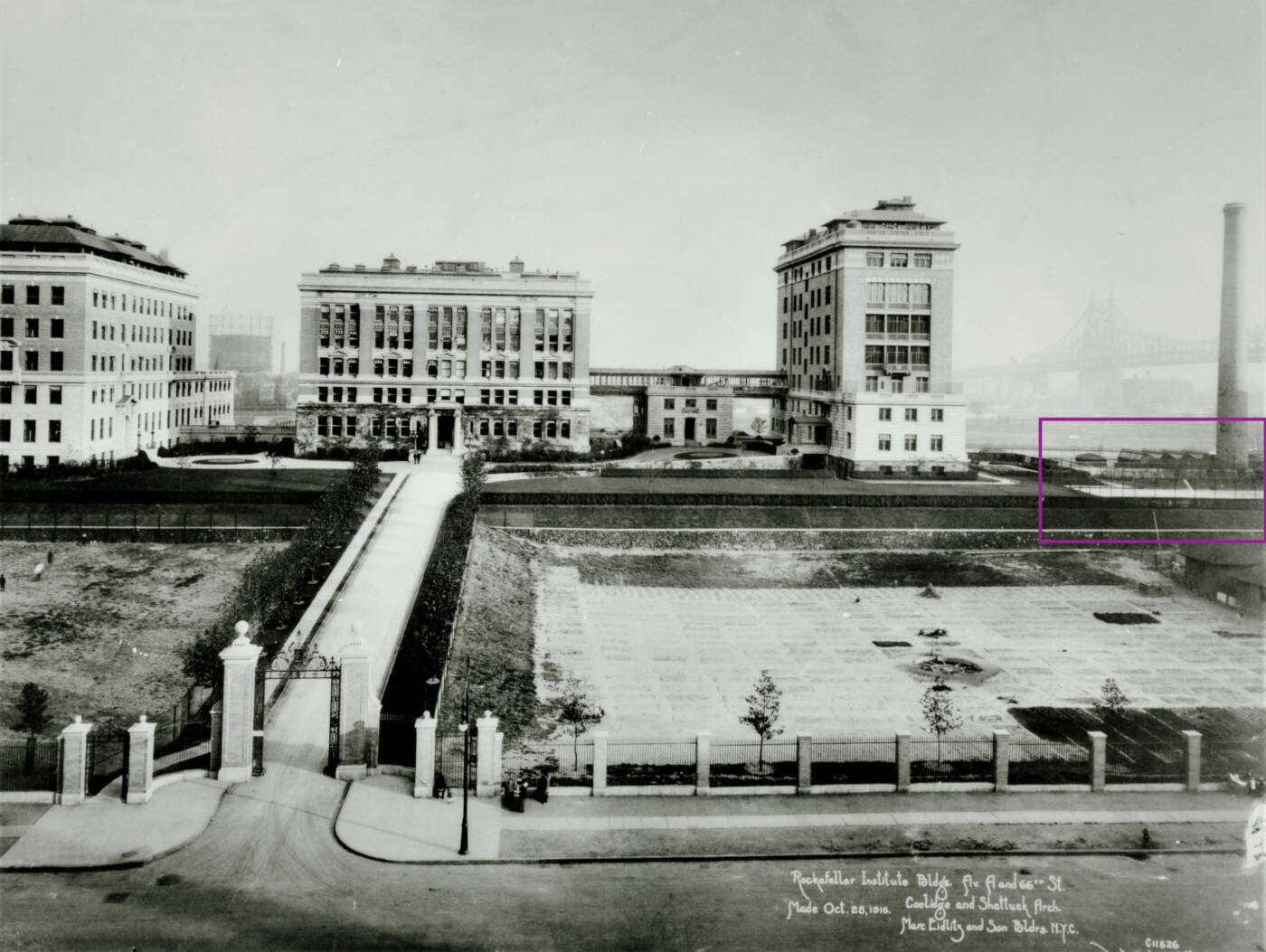
Campus view, 1916 (Courtesy of the Rockefeller Archive Center)
It proved so popular that by the late 1940s, four new tennis courts(opens in new window) had been constructed along York Avenue. Close by were a set of greenhouses(opens in new window) for growing plants to study botanical diseases. The original tennis court and the greenhouses are long gone, having made way for the construction of Fricke Hall, the Bronk Laboratory, and the Graduate Students Residence in the late 1950s and early 1960s.
However, one of the 1940s tennis courts survived the building frenzy—and took on its first incarnation as a multisport space. It was routinely flooded in the winter to transform it into an ice skating rink, a ritual that continued for half a century, says Alexander Kogan, Associate Vice President, Plant Operations & Housing, which is overseeing the renovation. “I remember skating on it myself,” says Kogan, who began working at Rockefeller in 1996.
So popular was ice skating in the mid-century that the esplanade along 68th Street was also turned into a rink (video courtesy of the Rockefeller Archive Center).
Video Player
In the late 2000s, the renovation of Smith and Flexner halls and the construction of the Collaborative Research Center led to permanently replacing the esplanade with the tennis court atop the 68th Street parking lot, where it remains today.
Last summer, the roof of the garage clearly became in need of significant structural repairs, kicking off the latest renovation. Initially the hope was that the facility could reopen in November, but campus events and winter weather delayed the project.
Once again, the newly redone tennis court won’t be just relegated to tennis. Freshly painted lines mean it can also host badminton and pickleball—which require nearly identically sized courts—plus the addition of four backboards and nets allow for shooting hoops, and two goals stand at the ready for soccer games.
And while it’s more of a space for contemplation rather than competition, the Philosophers Garden has been also resurfaced as part of the renovations.
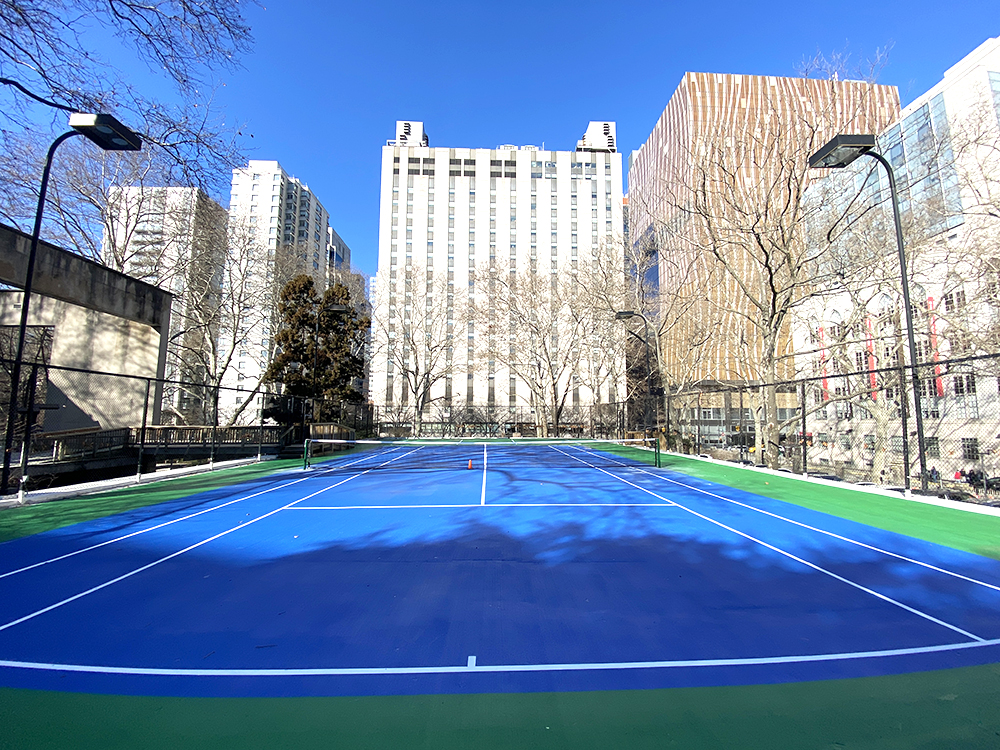
Looking towards York Avenue
Leagues of their own
The new facility is designed not just to make it easier for scientists, students, and staff to exercise but also to help revive some of the popular grassroots teams that sprung up on campus over the years. For instance, a basketball court displaced by CRC construction once inspired its own league. “A lot of departments and labs had teams, and there used to be tournaments,” Kogan says. “They used to give out trophies and champion jackets.”
In fact, the campus had basketball hoops by 1928(opens in new window) (below), located in a playground near 68th St, where the parking lot is today—which means the new basketball court is directly atop the one that existed nearly a century ago. (Whether Prohibition-era teams played on that dirt court is lost to history.)
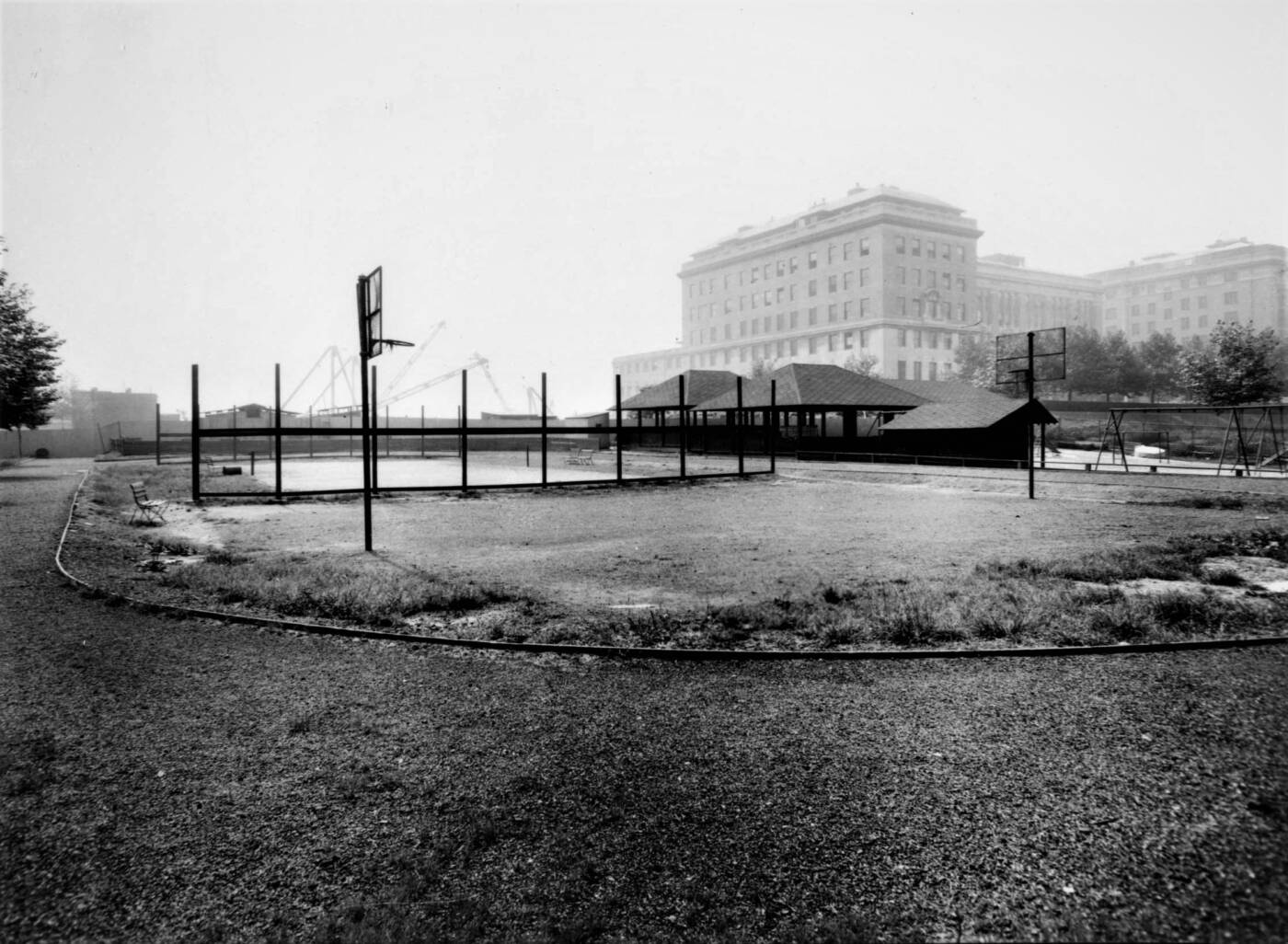
Children’s playground, 1928 (Courtesy of the Rockefeller Archive Center)
Biweekly, co-ed soccer was also a regular feature on campus before COVID. “We still have the soccer goals,” Kogan says. “They’re ready to go if the soccer community wants to get back at it.”
Two other athletic facilities will remain in their current locations: the squash courts(opens in new window), located in the basement of the Graduate Student Residence building, and the gym, located on the top floor of Founder’s Hall. Before COVID, the squash courts spurred friendly rivalries, in which people could challenge other players above or below them on the “ladder.” That, too, will be revived this year.
Kogan can envision the creation of a league for pickleball as well. Increasingly popular across the US, pickleball is a fast-paced court sport that draws elements from doubles tennis, badminton, and ping pong.
All of these leagues were self-organized by participants, as they’ll also need to be in the future. Players of racket sports must provide their own rackets and balls, but volleyball and basketball players will find balls on their respective courts.
Honor system
The court is open to all members of the Rockefeller University community and their guests. As for booking court time, “We have a reservation system(opens in new window) that takes into account all the conflicting courts,” says Timothy Blanchfield, Fitness Manager.
It’s more complicated than it sounds. Some sports can be played simultaneously; a basketball game on one side of the court, for instance, shouldn’t interfere with a pickleball game happening on the other side. But a tennis match will take over the entire space.
While the reservation system is automated, game play relies on the honor system; no one will be checking in players courtside. Evening matches are available daily, but court lights will wink out every night at 11 pm.
